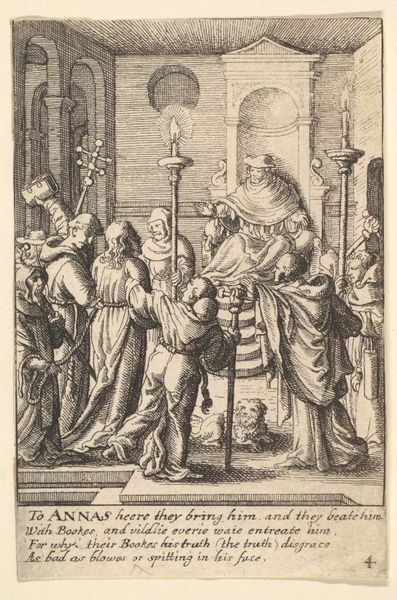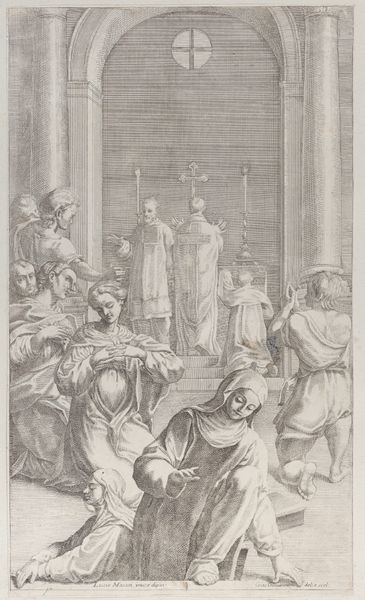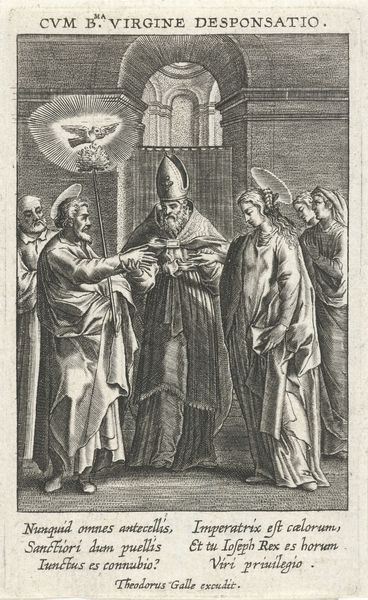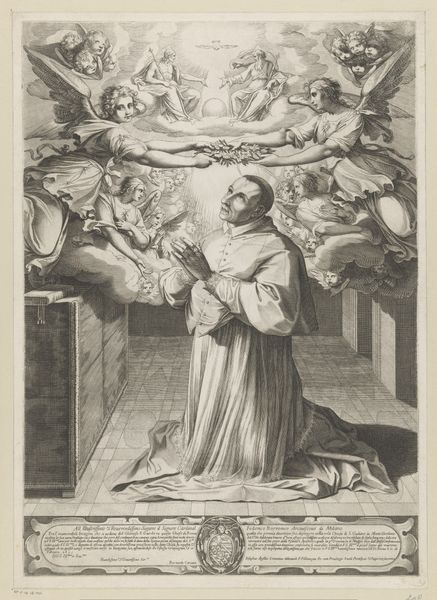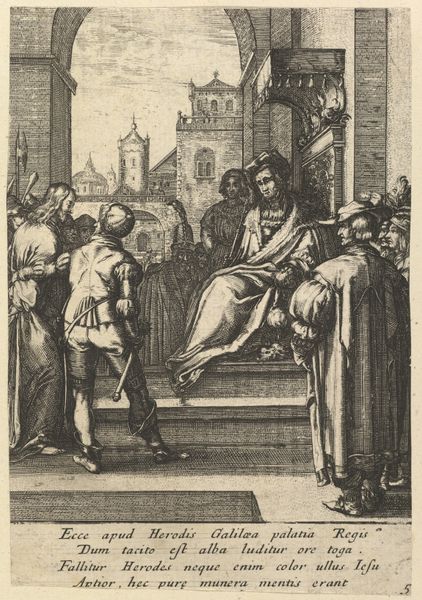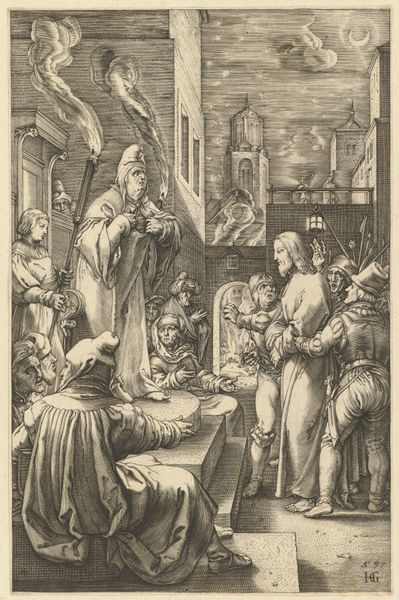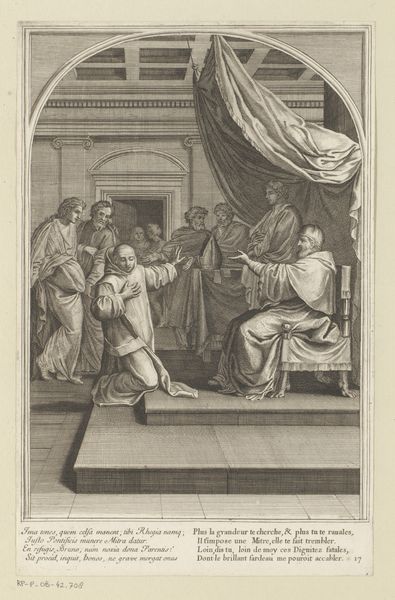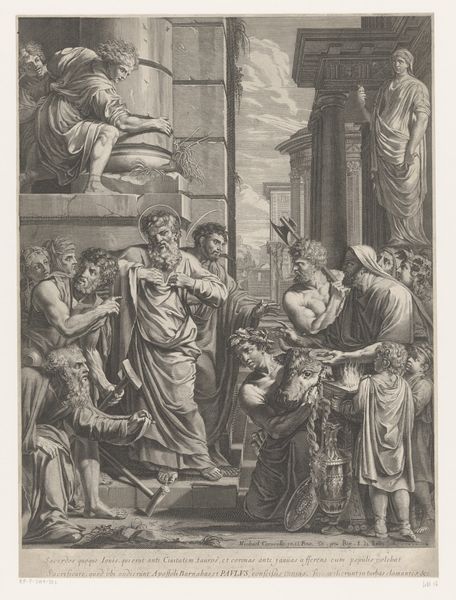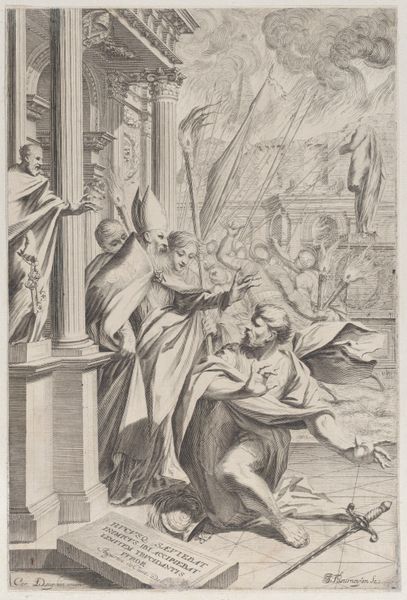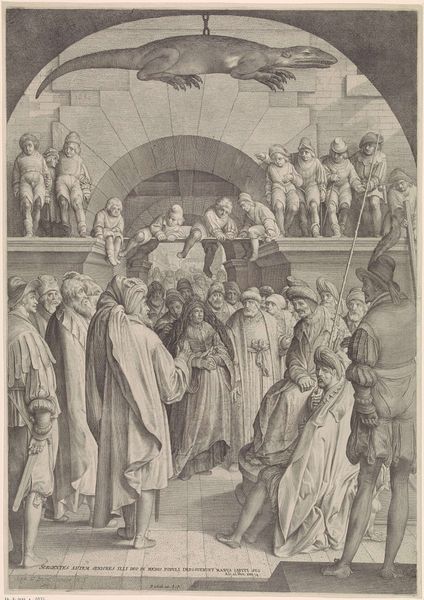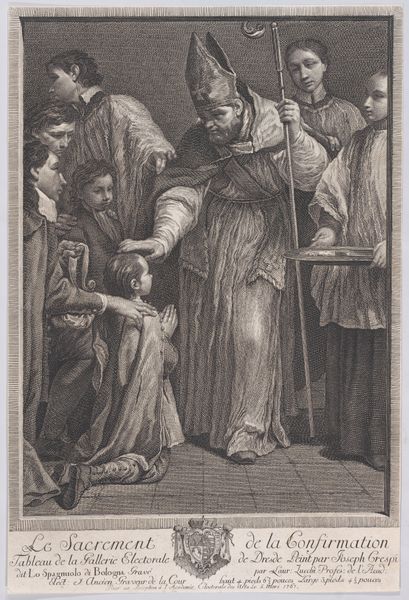
print, engraving
#
baroque
# print
#
old engraving style
#
figuration
#
history-painting
#
engraving
Dimensions: height 476 mm, width 351 mm
Copyright: Rijks Museum: Open Domain
Curator: The emotional tenor of this engraving is set primarily by the striking contrast of light and shadow, wouldn't you agree? A definite moment captured in dramatic black and white. Editor: Absolutely. And what a charged moment it seems to be! This print captures H. Thomas van Villanueva. The engraving, created sometime between 1642 and 1685, is by Conrad Lauwers. There's a dynamic at play between power and need that begs unpacking. Curator: Yes, notice how the light concentrates upon Villanueva as a symbol of charity and spiritual grace, especially in conjunction with his halo. Then look around him: people who represent humanity are seeking solace. The symbolism is palpable; Lauwers understood well how to construct meaning through images. Editor: Exactly, Lauwers understands the power dynamics at play. Look at the visual construction: a clergyman distributes alms—redistributing wealth, we could argue—while angels literally crown his actions from above. The engraving almost normalizes hierarchical power structures of the time. Curator: The Baroque really used allegories like these to underscore complex ideological messaging. These artists are drawing upon deeply rooted visual systems, where giving is holy. Think of Christian iconography—offerings, saints, ascensions. All about what it means to attain higher spiritual consciousness through service. Editor: But what about the service performed for power structures? Doesn't this sanitizing of charity divert us from asking questions about systemic economic inequality? Where did this wealth originate that Villanueva is handing out? I keep seeing it as carefully manufactured consent, frankly. Curator: But perhaps both views hold truth. Religious institutions of the time operated as part of a larger web of governance, responsible, at least nominally, for their subject's welfare. The picture conveys genuine compassion while also adhering to an existing social contract, it seems to me. Editor: Maybe. What stays with me is how skillfully Lauwers distills multifaceted socio-religious elements into one easily "digestible" visual; almost as if he's teaching the viewer not what to see, but *how* to see it. Curator: I agree. Thank you, looking at Lauwers from that angle brought so much to light for me. Editor: Thank you. Your perspective really illuminated other aspects for me too.
Comments
No comments
Be the first to comment and join the conversation on the ultimate creative platform.
